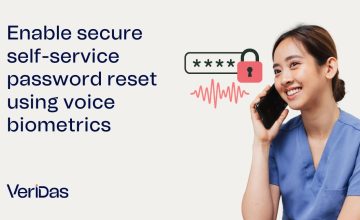What is spoofing? Definition and what does it mean
Spoofing is an Anglo-Saxon term used to describe fraudulent acts aimed at impersonating individuals on the Internet to commit criminal acts. To do this, fraudsters use different techniques to get hold of users’ data and act on their behalf.
Nowadays, these attacks are becoming more and more frequent, and it is, therefore, essential to have technologies that can detect them. The aim is none other than to protect both the users themselves and the companies and organizations.
What types of spoofing are there?
There are multiple types of spoofing depending on the medium and techniques used. For example:
- IP address spoofing: An IP address (Internet Protocol address) is a unique numeric label assigned to each device connected to a computer network that uses the Internet Protocol to communicate. It serves as a device’s identifying address, allowing it to communicate with other devices on the network. This attack involves spoofing a device’s IP address to make it appear to come from somewhere else. This can be done to impersonate another user or to evade network security.
- MAC address spoofing: A MAC (Media Access Control) address is a unique identifier assigned to most network devices, such as computers, smartphones, and tablets. It is used to identify devices on a network and usually consists of six groups of two hexadecimal digits separated by colons. The MAC address is assigned to the device’s network hardware, such as its Ethernet or Wi-Fi card, and is used to identify the device on the network. It is often used with an IP (Internet Protocol) address, which identifies the device on the Internet. Each MAC address is unique and is used to identify a specific device on the network. It is not possible for two devices to have the same MAC address. This type of spoofing involves spoofing the MAC address of a network device to make it appear to come from somewhere else. This can be used to evade network security or to impersonate another user on a local network.
- DNS Spoofing: The Domain Name System (DNS) is a decentralized hierarchical naming system for computers, services or other resources connected to the Internet or a private network. It translates human-readable domain names into numeric IP addresses that computers can understand and communicate with each other. For example, when you type “www.example.com” into your web browser, your computer contacts a DNS server and asks it to translate the domain name into an IP address. The DNS server responds with the IP address of the website’s server, and your browser connects to the server using that IP address to retrieve the website. This type of spoofing involves forging the information contained in a DNS server to redirect users to fake or malicious websites. This can be used to steal confidential information or to spread viruses and malware.
- Email spoofing or phishing: involves forging the sender of an email to make it appear to come from another person or company. This can trick recipients into stealing confidential information or spreading viruses and malware through emails.
- SMS spoofing or phishing: involves altering the sender’s phone number or name to make it appear that the message is from a trusted source. This can trick recipients into sharing confidential information or downloading malware.
Caller ID spoofing
Caller ID spoofing is a practice where the caller intentionally falsifies the information transmitted to your caller ID display to disguise their identity. Here’s a more detailed breakdown:
- Purpose: The purpose of caller ID spoofing can vary widely. It can be used for legitimate reasons, such as protecting privacy or as a part of a service for businesses to display a single callback number. However, it is often used for malicious purposes, including fraud, harassment, or to bypass call blocking.
- Mechanism: Spoofing typically involves using software or internet-based services to alter the caller ID information. These tools allow the caller to enter any phone number they wish to appear on the recipient’s phone display.
- Legality: The legality of caller ID spoofing depends on the jurisdiction and the intention behind the act. In many places, using caller ID spoofing for fraudulent or malicious purposes is illegal and subject to penalties.
- Detection and Prevention: Detecting caller ID spoofing can be challenging. Some advanced systems and services can identify potential spoofing by analyzing call patterns and discrepancies. Users can protect themselves by not trusting caller ID information alone and being cautious with unsolicited calls, especially those asking for sensitive information.
- Regulations: Many countries have regulations to combat caller ID spoofing. For example, in the United States, the Truth in Caller ID Act prohibits spoofing with the intent to defraud, cause harm, or wrongfully obtain anything of value.
In summary, caller ID spoofing is a technique to manipulate the caller ID information displayed on a phone. While it has legitimate uses, it is often associated with fraudulent activities.
What is an example of spoofing?
One of the best tools to counter spoofing attacks is using identity verification technologies based on biometrics and Artificial Intelligence.
These systems make it possible to quickly and securely verify individuals’ identities. However, spoofing methods also attempt to fool identity verification systems.
Identity document spoofing
The first step of a digital onboarding process usually starts with analyzing an identity document. In this case, it is vital to have technologies that can detect the main types of document fraud, such as the detection of photocopies, screen attacks, modification of data printed on the documents, or the presentation of high-quality false documents, among others.
Facial biometrics spoofing
Another important step in identity verification or authentication processes is biometric comparison, where users must take a selfie to contrast their face with that of the identity document. In these cases, multiple spoofing methods or presentation attacks try to fool facial recognition systems, from photos and 3D masks to the dreaded deepfakes.
Voice biometrics spoofing
Voice biometrics also suffer from spoofing attacks based on prerecorded or synthetic voices. Again, it is critical to have systems in place that are capable of alerting about these fraud attempts.
How to detect and avoid Spoofing?
Spoofing methods become more complex and challenging to execute the more secure the identification method is. Hacking a password or impersonating someone on a phone call is relatively simple for cybercriminals. However, as those identification methods become more sophisticated, as with biometrics, it becomes more difficult for fraud attempts to be successful.
Not all biometrics vendors have anti-spoofing capabilities capable of detecting these attacks, so it is essential to have a proven vendor with evaluations and certifications that support the security of their technologies.
At Veridas, we evaluate our biometric engines at NIST and have specific certifications, such as iBeta Level 2, for our facial biometrics and proof-of-life technology.
Generally, you can follow these recommendations to avoid suspicious attacks:
- Use security tools: you can use programs and applications specialized in detecting Spoofing attempts, such as firewalls, antivirus, and antispam.
- Verify the authenticity of the source: verifying the integrity of the information and the sender’s identity before opening emails, downloading files, or clicking on suspicious links is essential.
- Configure email account security options: These can be configured in email accounts to prevent Spoofings, such as using two-step authentication and sender identity verification.
- Do not provide sensitive information: it is important not to provide sensitive information, such as credit card numbers, passwords, or personal data unless you are sure of the identity and trustworthiness of the sender.
- Check the sender’s e-mail address and compare it with their address. If the sender’s e-mail address is different from the actual e-mail address, the e-mail is likely fake.
- Look for inconsistencies in the email content: For example, if the email contains information that does not match the sender’s accurate information or contains typographical or grammatical errors, it is likely to be phishing.
- Check the e-mail for suspicious links or attachments. If the email contains links or attachments that are not from a trusted source, or if the links or attachments are not relevant to the content of the email, it is likely to be phishing.
What is the difference between phishing and spoofing?
Phishing is a technique used by fraudsters to steal people’s data by impersonating companies or organizations, conveying a false sense of trust and thus obtaining sensitive information from users.
As we have explained, spoofing consists of using this information to impersonate someone’s identity and illegally operate under their name.
























